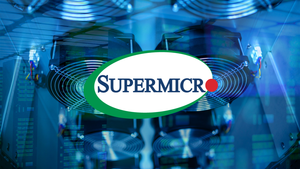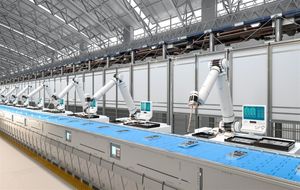
Cambridge, MA – September 23, 2025 – In a landmark announcement today, researchers at the Massachusetts Institute of Technology (MIT) unveiled SCIGEN, a revolutionary new tool poised to fundamentally transform the landscape of materials discovery. SCIGEN enhances generative AI models, enabling them to design and predict novel materials with unprecedented precision, particularly those critical for advanced technologies like quantum computing. This breakthrough promises to accelerate the development of next-generation quantum devices by guiding AI with specific design rules and physical constraints, moving beyond the limitations of traditional material synthesis.
The immediate implications of SCIGEN are profound. By allowing AI to generate stable, functional quantum materials, the tool could drastically cut down research and development timelines, fostering innovation in sectors ranging from advanced electronics to renewable energy. The ability to precisely tailor materials for specific exotic properties, such as superconductivity or unique magnetic states, marks a significant leap forward from serendipitous discovery to targeted, property-guided design.
The Genesis of Innovation: How SCIGEN Redefines Materials Science
SCIGEN, or Structural Constraint Integration in GENerative model, is the culmination of collaborative efforts, including significant contributions from Google DeepMind (NASDAQ: GOOGL), aimed at overcoming a critical hurdle in AI-driven materials design: the tendency of generative models to produce impractical or unstable material structures. This "hallucination" problem has long plagued the field, limiting the real-world applicability of AI-generated material candidates.
At its core, SCIGEN is a sophisticated computer code that modifies existing generative diffusion models. It meticulously guides these models to adhere to user-defined physical and geometric rules at each iterative generation step. This ensures that the AI's outputs are not only novel but also physically viable and stable. In rigorous trials, SCIGEN generated over 10 million potential quantum material candidates, leading to the successful synthesis and validation of two novel magnetic compounds, TiPdBi and TiPbSb, by researchers at Michigan State University and Princeton University. These compounds exhibited properties precisely aligned with AI predictions, a testament to SCIGEN's efficacy. The research, supported by entities like the U.S. Department of Energy and the National Science Foundation, underscores a paradigm shift in how we approach material innovation.
SCIGEN's unique strength lies in its embedded "design rules." Unlike traditional generative AI that might prioritize thermodynamic stability, SCIGEN can steer models toward materials exhibiting specific, desirable quantum properties. These rules encompass geometric and physical constraints, ensuring appropriate atomic distances and crystal lattice symmetries. Crucially, SCIGEN focuses on guiding AI to generate materials with quantum-relevant lattice patterns such such as Archimedean, Kagome, and Lieb lattices—structures known to give rise to exotic electronic and magnetic states vital for quantum phenomena. This directed approach transforms materials discovery into a more efficient, property-guided methodology, minimizing the generation of unfeasible structures and enhancing the reliability of AI-driven suggestions.
Market Ripple Effects: Winners and Losers in a SCIGEN-Powered World
The advent of SCIGEN is poised to send significant ripple effects across financial markets, creating clear winners and potential losers in the race for advanced materials and quantum supremacy. Companies heavily invested in traditional, labor-intensive materials R&D may face pressure to adapt or risk falling behind.
Potential Winners:
- Quantum Computing Hardware Developers: Companies like IonQ (NYSE: IONQ), Rigetti Computing (NASDAQ: RGTI), and Honeywell (NASDAQ: HON) (through Honeywell Quantum Solutions, now Quantinuum) stand to gain immensely. SCIGEN's ability to accelerate the discovery of stable, error-resistant qubit materials could be a game-changer, speeding up the development of scalable quantum computers.
- Advanced Materials Companies: Firms specializing in novel materials for high-tech applications, such as Applied Materials (NASDAQ: AMAT) or DuPont de Nemours Inc. (NYSE: DD), could leverage SCIGEN to expand their product portfolios and enhance their R&D pipelines. The tool offers a pathway to discover materials for diverse applications beyond quantum computing, including advanced semiconductors, energy storage, and biomedical devices.
- AI and Cloud Computing Providers: Google (NASDAQ: GOOGL) (through Google DeepMind's collaboration), Microsoft (NASDAQ: MSFT), and Amazon (NASDAQ: AMZN) (through AWS) will benefit from the increased demand for computational resources and AI development platforms required to run and further develop tools like SCIGEN. Their cloud infrastructure and AI services will be crucial enablers of this new era of materials discovery.
- Specialty Chemicals and Semiconductor Materials Suppliers: Companies that can quickly synthesize and scale production of SCIGEN-identified materials will see increased demand.
Potential Losers:
- Traditional R&D Firms Slow to Adopt AI: Companies relying solely on conventional trial-and-error methods for materials discovery may find themselves at a competitive disadvantage. The speed and efficiency of AI-driven tools like SCIGEN could render slower, more expensive R&D processes obsolete.
- Companies Dependent on Scarce Materials: While SCIGEN offers the potential to mimic rare-earth element properties with more abundant materials, firms heavily invested in the extraction or processing of scarce materials for quantum or advanced applications might face market shifts if new, more accessible alternatives emerge.
The market will likely see increased M&A activity as traditional materials companies seek to acquire AI expertise or integrate advanced computational tools. Furthermore, investor focus will shift towards companies demonstrating strong AI integration in their R&D strategies, signaling a readiness for the future of materials innovation.
Broader Implications: Reshaping Industries and Global Competitiveness
SCIGEN's arrival is more than just a technological advancement; it represents a significant inflection point in the broader landscape of scientific discovery and industrial competitiveness. It fits squarely into the burgeoning trend of "AI for Science," where artificial intelligence is being deployed to accelerate fundamental research across disciplines. This shift signifies a move from hypothesis-driven experimentation to data-driven discovery, where AI acts as an intelligent guide rather than just a data cruncher.
The ripple effects will extend beyond direct competitors and partners. Regulatory bodies will need to consider the implications of rapidly discovered novel materials, particularly concerning intellectual property, safety, and environmental impact. The speed of discovery could outpace traditional regulatory frameworks, necessitating new approaches to material certification and deployment. Historically, breakthroughs in materials science—from the invention of steel to the development of semiconductors—have always ushered in new industrial revolutions. SCIGEN has the potential to be one such catalyst, enabling the creation of previously unimaginable materials with tailored properties.
For global competitiveness, nations and corporations that embrace and invest in AI-driven materials discovery will gain a strategic advantage. The ability to rapidly design and synthesize materials crucial for quantum computing, advanced energy solutions, and next-generation electronics will be a key determinant of economic and technological leadership. This could lead to a renewed focus on national AI and materials science initiatives, akin to the space race or the semiconductor arms race of past decades. Companies like Samsung (KRX: 005930), which is already involved in parallel efforts with "physics-aware AI" tools like PaRS, highlight a broader industry recognition of this critical trend.
What Comes Next: A Glimpse into the Future
The immediate future following SCIGEN's announcement will likely see a surge in research and development efforts leveraging the tool. Short-term, academic and industrial labs will be keen to apply SCIGEN to their specific materials challenges, particularly in areas where traditional methods have hit roadblocks. The focus will be on validating SCIGEN's predictions through experimental synthesis and characterization, further building confidence in its capabilities. We can expect to see an accelerated discovery of new quantum spin liquids (QSLs), crucial for stable qubits, and materials with enhanced superconductivity.
Long-term, SCIGEN's principles could be expanded to incorporate even more complex design rules, including chemical and functional constraints, allowing for the discovery of materials tailored for a far wider array of applications, from advanced catalysts to bio-compatible implants. This could lead to a democratization of materials discovery, making advanced materials more accessible and reducing reliance on scarce resources. Market opportunities will emerge for companies specializing in AI-driven materials simulation, synthesis, and characterization services. Strategic pivots will be required for traditional materials companies to integrate these AI tools into their core R&D processes, potentially through partnerships or acquisitions of AI startups. The ultimate outcome could be a future where the design of materials is as precise and predictable as the design of software.
Conclusion: A New Dawn for Materials Innovation
MIT's SCIGEN tool represents a monumental leap forward in the quest for breakthrough materials, particularly those vital for quantum computing. By merging the power of generative AI with stringent physical and geometric constraints, SCIGEN has effectively bridged the gap between theoretical material design and practical, synthesizable compounds. This innovation is not merely an incremental improvement; it is a foundational shift that will accelerate discovery, drive precision engineering, and unlock previously unattainable material properties.
The market moving forward will be characterized by rapid innovation, increased competition in AI-driven R&D, and a strategic realignment among industry players. Investors should closely watch companies demonstrating leadership in AI integration for materials science, as well as those poised to capitalize on the accelerated development of quantum technologies. The lasting impact of SCIGEN will be felt across numerous industries, ushering in an era where the design of novel materials is no longer a matter of chance, but a testament to intelligent, guided discovery. The coming months will be crucial in observing how this powerful tool translates its immense potential into tangible, real-world applications that redefine the boundaries of what is technologically possible.





